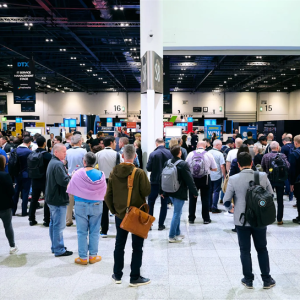
For many organisations, cloud migration has not turned out quite as advertised. Promised scalability, agility and cost-effectiveness they have encountered instead migration headaches and unexpected costs. According to a KPMG survey of technology leaders, 67% of companies have yet to realise a significant return on investment from cloud.
Wrestling with this challenge, organisations are increasingly reaching for a hybrid cloud alternative – combining outsourced IT services off-site with optimised on-premise environments.
It is in this context that Tech Monitor convened a discussion among senior IT decision makers. ‘How to get the best of both worlds’, put together in association with Lenovo, took place in early May and provided an opportunity to share migration frustrations and opportunities, to exchange cloud successes and failures.
Attendees, at various stages on their hybrid journey, outlined some of the challenges they face: interoperability in and between cloud providers, and synthesising legacy systems topped the list. Others were still seeking to make the case for hybrid cloud, requiring a workable roadmap and a commercially-viable business rationale.
Asked why they used the cloud, attendee responses varied. One said sustainability was the main driver while another argued that its adoption helped “spread accountability”. Another put it simply: “I don’t want to be in the infrastructure business anymore. We spend too much time upgrading and patching hardware and firmware.”
Figures shared on the night suggest that half of UK businesses remain “private IT-centric”. In other words, they rely solely on private hosting. Public cloud plays no part. A further 12% of businesses are public cloud-first, working on the assumption that cloud is the most appropriate place for new workloads unless it can be shown otherwise. Another 2% of UK firms are public cloud-only.
By a show of hands, most attendees used two or more hyperscalers as part of their hybrid environment. The straw poll suggested most use Microsoft Azure followed closely by AWS and Google Cloud.
The discussion turned to which workloads best suited public cloud and which best suited private cloud. Again attendees offered divergent views. One said simply that the divide was between administrative applications such as those used by HR and business-critical applications. The former belonged in the public cloud, the latter closer to home. Another suggested that any system that required the storage of publicly identifiable information should be kept on-premise. This, he said, ensured good privacy, security and regulatory practice. A third attendee took the diametrically opposing view, arguing that the guardrails put in place by the big cloud providers meant public cloud was as secure as on-premise, if not more so.
A fourth attendee invoked “data gravity”[1], the notion that no matter what your intentions are in terms of workloads, the gravitational pull of data – as vital organisational asset – will invariably lead organisations back in-house. Today, the expense and effort of moving large amounts of data between various environments and applications count against the public cloud. Until data gravity pulls towards the cloud – and cost and complexity issues are addressed – this will not change.
Famously, Dropbox moved the bulk of its files from the cloud into its own data centres[2]. While the irony of a provider of cloud storage taking its data on-premise is lost on few people, Dropbox’s reverse migration does help illustrate that a hybrid approach to workload provision is likely to be a sensible one. It’s hybrid for a reason.
‘How to get the best of both worlds in the hybrid cloud’ – a Tech Monitor roundtable discussion in association with Lenovo – took place on 4 May 2023 at The Mercer, Threadneedle Street, London. If you are interested in joining us for our next roundtable event, taking place on 5th July at 1 Lombard Street, London, please register here and we will respond to you as soon as possible.
Homepage image by Gorodenkoff/Shutterstock







